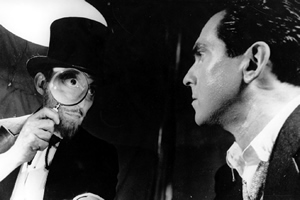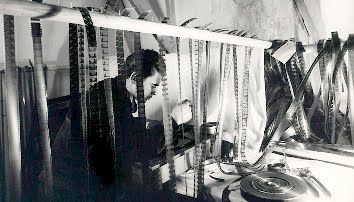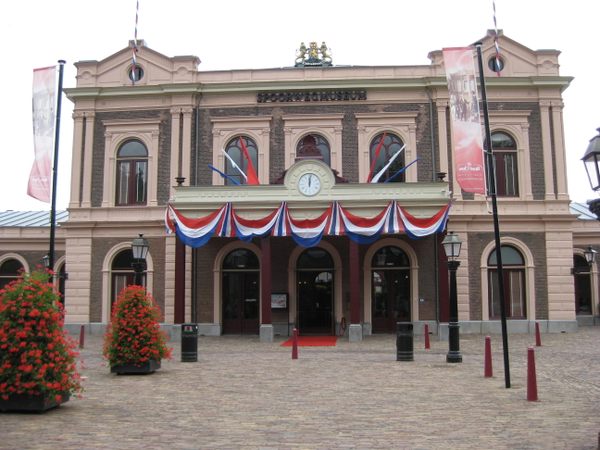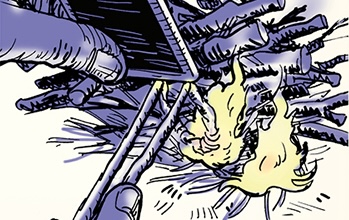World’s tiniest violin is smaller than a strand of human hair
World’s tiniest violin is smaller than a strand of human hairIn a remarkable feat of engineering at the nanoscale, physicists at Loughborough University have crafted what they believe to be the world’s smallest violin. You...

In a remarkable feat of engineering at the nanoscale, physicists at Loughborough University have crafted what they believe to be the world’s smallest violin. You would think that this is just some random fun thing that they’re doing because they can. But while it is indeed fun and creative, there’s a bigger, purpose, so to speak. This miniature marvel, barely wider than a human hair, was created using cutting-edge nanolithography technology, opening doors for advancements in various scientific fields.
The minuscule musical instrument measures a mere 35 microns in length and 13 microns in width. To put that into perspective, a micron is one-millionth of a meter. This makes the violin so tiny that it could comfortably sit within the width of a single strand of human hair, which typically ranges from 15 to 120 microns. Crafted from platinum, the ‘violin’ is more of a microscopic image etched onto a small chip rather than a playable instrument.
Designer: Loughborough University


The creation of this incredibly small structure was made possible through the use of a sophisticated nanotechnology system at Loughborough University, featuring a state-of-the-art nano-sculpting machine called a NanoFrazor. This groundbreaking instrument from Heidelberg Instruments employs a technique called Thermal Scanning Probe Lithography (t-SPL).
At its core, the NanoFrazor utilizes an ultra-sharp, heatable probe with a tip radius of less than 5 nanometers to directly write intricate nanostructures onto a substrate coated with a thermally sensitive resist material. This process allows for incredibly high precision, achieving lateral resolutions as fine as 15 nanometers and vertical resolutions down to 2 nanometers. This makes it a versatile tool for advanced research across diverse applications, including the fabrication of quantum devices, nanoscale electronics, nanophotonic structures, and even biomimetic substrates for cell growth. This combination of precision, in-situ monitoring, and versatility makes the NanoFrazor a powerful instrument for pushing the boundaries of nanoscale engineering.

While the Loughborough University team acknowledges that their tiny violin isn’t capable of producing any melodies, its creation serves a significant purpose. This project acts as a testbed for the university’s new nanolithography system, allowing researchers to explore its capabilities in building and analyzing structures at the nanoscale. Experiments like this pave the way for potential new technologies and developments in areas such as advanced computing and innovative methods for harvesting energy.
This incredible achievement highlights the power of nanotechnology and the ingenuity of researchers pushing the boundaries of what’s possible at the smallest scales. While we might not be hearing any tiny tunes from this violin anytime soon, its existence represents a significant step forward in the world of nanoscale engineering and its potential applications for the future.



The post World’s tiniest violin is smaller than a strand of human hair first appeared on Yanko Design.




![‘Predator: Killer of Killers’ Directors on the Anthology Format and Historical Accuracy [Interview]](https://i0.wp.com/bloody-disgusting.com/wp-content/uploads/2025/06/Screenshot-2025-05-19-121021-1.jpg?fit=1694%2C802&ssl=1)

![Vampiro Returns — To Build a Cult on the Airwaves [Podcast]](https://bloody-disgusting.com/wp-content/uploads/2025/06/vAMPIRO-bANNER-TEMP-1024x576.png)












































![Metaphysical Pop [THE MUSIC OF CHANCE]](https://jonathanrosenbaum.net/wp-content/uploads/2011/05/the-music-of-chance-patinkin-kid-1.jpeg)













































![‘I Don’t Understand You’ Directors Brian Crano & David Joseph Craig On Working With Nick Kroll, Andrew Rannells & Making A Vacation Horror Comedy [Interview]](https://cdn.theplaylist.net/wp-content/uploads/2025/06/06125409/2.jpg)












![United Quietly Revives Solo Flyer Surcharge—Pay More If You Travel Alone [Roundup]](https://viewfromthewing.com/wp-content/uploads/2025/04/united-737-max-9.jpg?#)





















































































































































































































































































































































































